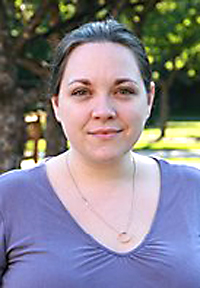Associate Professor of Psychology
Contact Information
Frost Building, 202
CPO 1925
Email: jonessa@berea.edu
Phone: 859-985-3678
Spring 2022
Office Hours
Tue: 1 p.m. – 3 p.m.
In-person

Class Schedule
- PSY 100 A (Mon/Wed/Fri: 10:40 am – 11:50 am)
- PSY 214 (Tue/Thur: 10:00 am – 11:50 am)
- PSY 325 (Tue/Thur: 1:00 pm – 2:50 pm)
Degrees
- B.A., Smith College, 2003
- Ph.D, Duke University, 2012
Advisor: Dr. Elizabeth Brannon
Dissertation: Comparative Studies of Numerical Cognition in Nonhuman Primates: From Numerical Comparison to Arithmetic
Papers and Publications
Jones, S. M., Kelly, B., Lamb, C., Robillard, M., Sowers, N. L., Anderson, C. B., Ortquist-Ahrens, L. (2016). Can Formative Peer Review Ease the Transition for Experienced New Faculty? Transformative Dialogues: Teaching & Learning Journal, 9(1), 1-16.
Jones, S. M., Pearson, J., DeWind, N., Paulsen, D., Tenekedjieva, A. & Brannon, E.M. (2013). Lemurs and macaques show similar numerical sensitivity. Animal Cognition, doi: 10.1007/s10071-013-0682-3.
Jones, S. M., & Brannon, E. M. (2012). Prosimian primates show ratio dependence in spontaneous quantity discriminations. Frontiers in Comparative Psychology, 3, 1-8.
Jones, S. M., Cantlon, J. F., Merritt, D. J., & Brannon, E. M. (2010). Context affects the numerical semantic congruity effect in rhesus monkeys. Behavioral Processes, 83(2), 191-196.
Brannon, E. M., Jordan, K. E., & Jones, S. (2010). Behavioral Signatures of Numerical Discrimination. Primate Neuroethology, Editors, M. Platt and A. Ghazanfar. Oxford Press.
Posters and Presentations
Roman, J. & Jones, S. M. (2018). Betta fish (Betta splendens) spontaneously use both numerosity and surface area during discrimination learning. Talk presented at TriState Plus Conference on Animal Behavior, Hiram, OH.
Bedolla, A., Rivera Perez, E., Barger, J., Roman, J., Jones, S.M. (2017) Betta fish (Betta splendens) spontaneous use of numerosity and surface area during discrimination learning. Poster presented at the Kentucky Academy of Sciences annual meeting.
Sowers, N. L., Robillard, M., Lamb, C., Kelly, B., Jones, S. M., Anderson, C. B. (2016). We’re Not in Kansas Anymore, Toto: Pulling Back the Curtain on a New Institution. Presentation session at Lilly Conference on College Teaching, Miami, OH.
Jones, S. & Brannon, E. (2016). Experience improves numerical acuity in nonhuman primates. Poster presented at the 23rd Conference on Comparative Cognition, Melbourne, FL.
Potopa, A. & Jones, S. (2015). Observational learning in captive wolves. Poster presented at the 22nd Conference on Comparative Cognition, Melbourne, FL.
Potopa, A. & Jones, S. (2015). Observational learning in captive wolves. Poster presented by invitation at the Dean’s Club annual event hosted by St. Norbert College President T. Kunkel.
Jones, S. (2012). Comparative Studies of Numerical Cognition in Nonhuman Primates. Talk presented to the Social Science Research Forum, St. Norbert College.
Jones, S. & Brannon, E. (2012). Prosimian primates show ratio dependence in spontaneous quantity discriminations. Talk presented at the Midwest Primate Interest Group 2012 meeting.
Jones, S. (2011). Numerical cognition in prosimians and monkeys. Talk presented to the Developmental Psychology Brown Bag Series, Duke University.
Jones, S. (2011). Numerical cognition in nonhuman primates. Talk presented to the Society of Duke Fellows, Duke University.
Jones, S. & Brannon, E. (2011). Spontaneous number representation in prosimians. Poster presented at the 18th Conference on Comparative Cognition, Melbourne, FL.
Jones, S., Cantlon, J., Carlson, M., & Brannon, E. (2009). Numerical Sensitivity of Lemurs. Poster presented at the 16th Conference on Comparative Cognition, Melbourne, FL.
Research interests
- Evolutionary development of abstract thought
- Number cognition and mental representation in nonhuman species
- Cognitive biases in human and nonhuman species
- Behavioral economics and the representation of quantity
- Best practices in teaching psychology and statistics